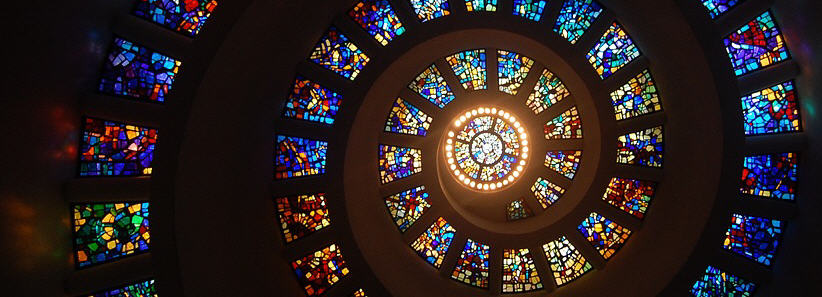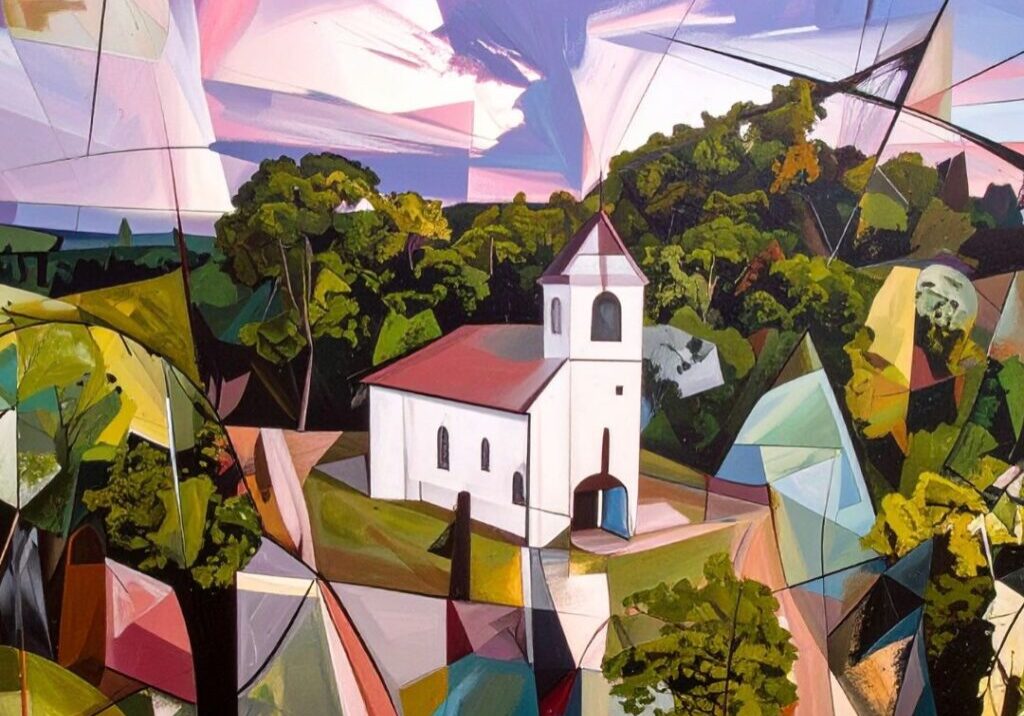A Response To John Haught’s “A New Cosmic Story”
We are story tellers and meaning makers and the stories we tell shape the meaning of our lives. John Haught, a longtime friend and colleague, has been engaged in the area of science and religion for over four decades. But his recent books are moving us beyond the rather staid notion of dialogue between science and religion toward a new understanding of the cosmos itself. Building on the insights of Teilhard de Chardin, Haught claims there is an inside story to the universe, a depth dimension that undergirds the rise of subjectivity; and this inside story is, in a sense, the driving force of the outside story or the objective universe. (See recent contributions by John Haught on A New Cosmic Story HERE). I could not agree more. If story shapes life, then telling only half the story (the outside story) may account for our partial lives, that is, our lack of apprehending the whole. Even more, however, it is the inside story that accounts for the religious dimension of the universe. This is what Teilhard de Chardin realized through his profound reflections on cosmic life.
In several writings, Teilhard saw that religion and evolution are complementary, the inner-outer dimension, so to speak, of cosmic life. In one essay, for example, he wrote that religion and evolution are “destined to form one single continuous organism, in which their respective lives prolong, are dependent on, and complete one another, without being identified or lost.” Elsewhere he said that religion is biologically (we might almost say mechanically) the necessary counterpart to the release of the earth’s spiritual energy. The true function of religion is “to sustain and spur on the progress of life.” Well, this not how we think about religion and in fact we hold just the opposite: religion defines, binds, and constrains our spiritual energies by focusing them on a platonic God up above and an other-worldly place of eternal life we know as heaven.
Professor Haught has wisely stated that we need a new religious story aligned with the new cosmos story. Christianity is an axial religion that emerged in a particular era of cosmic history which German philosopher Karl Jaspers called the “axial period,” roughly between 800 BCE – 200 BCE. The new story of the universe based on a new understanding of physics and cosmology is related to what Ewert Cousins called, a “second axial period.” This new universe story is radically new compared to the cosmos of the axial period because our universe is dynamic and unfinished. Since the axial religions, including Christianity and Judaism, emerged in a fixed static cosmos, our new cosmology invites a new story of religion. This new story of religion demands a new theological method, as Haught states, one based not on analogy (or archeology, as he says) but on anticipation of the future. The cosmic narrative is still unfolding and thus the story is not yet complete. In this respect, we live in an anticipatory universe. Teilhard wrote that the universe rests on the future which means the future is our truest and deepest reality.

If we take the future as our starting point for thinking about God, creation, and humanity—then everything we know must change or rather be realigned to an evolving universe, including our theologies, philosophies, economic and political systems, cultural matrices—in short, our planetary life. Haught’s anticipatory method bears an analogy with Werner Heisenberg’s uncertainty principle. Just as we cannot determine the position and momentum of a particle simultaneously (for if we measure one dimension, say position, we alter the other) so too every determination in the present alters or affects the future. Hence, we cannot say exactly what the future will be but we can anticipate a number of possible outcomes. What governs the future? On one hand we must admit the role of subjective consciousness and on the other hand, we must ask, consciousness of what? Here the role of God, faith, and transcendence make a critical difference to what we hope for; to believe there is a radical divine otherness at the heart of cosmic life, what Teilhard called “Omega,” is to trust or lean into that which is pulling us toward unity, wholeness, and community. The sociality and complex patterns of evolution tell us that we are in this together.
What is our starting point for an anticipatory universe? How do we begin to live in a way that we rest on the future? Meditation that deepens within us trust and hope is necessary but trust and hope must be born from an interior freedom; an ongoing surrender to the indwelling love of God.
From my own Christian perspective, I would begin by returning to the Gospel stories we have been telling for centuries and begin to tell these stories through new eyes, the eyes of new creation, to see that the mystery that we name as “God” loves the radically new. For the Christ event is not the foundation of a new religion but the foundation of a new cosmos, that is, a new whole. Christianity is not normative of religion; it is normative of evolution, Teilhard suggested. We have yet to engage Christianity as a spiritual process of cosmic personalization oriented toward the future fullness of life. But thanks to the work of John Haught and others we can begin to awaken to a whole new reality of religion and evolution and a new wholeness up ahead.
 View print-friendly version
View print-friendly version
3 Comments
Related Posts

Mission for an Evolutionary Christianity
We are living through tumultuous times. Political polarization intensifies, violence against vulnerable populations escalates, and the foundational principles of human dignity face erosion. For many, the cognitive dissonance between professed…


Our youth needs stories. Hero’s journeys( such as Jesus’ Passion, Crucifixion, death and resurrection), myths, (Jonah and the whale in the 21st century) in order to develop meaning. There is a whole scale loss of worth among our younger generations because there isn’t something to “Ground and Center” them.
Native Americans and Indigenous spiritualities have millennia of stories for grounding. Unfortunately, acculturation and appropriation have diminished those still available for recall.
Stories and myths use symbols and archetypes from everyday life to give meaning to reality. To what is being lived through each and everyday. Yet, where do we find the meaning for the daily mass shotings? The “smaller” daily multiple random shootings of people? The rampant abuses of animals? The blatant destruction of habitat? Ongoing corruption at every branch of government? People are desperately searching for meaning…and there are no guiding stories in the static religion we find ourselves in. Christianity needs enlightened storytellers now!
.
For me, the words that most stand out are “…to believe there is a radical divine otherness at the heart of cosmic life, what Teilhard called “Omega,” is to trust or lean into that which is pulling us toward unity, wholeness, and community. …but trust and hope must be born from an interior freedom; an ongoing surrender to the indwelling love of God.” I would add the importance of joy, a joy that often passes understanding. Interior freedom allows a joyful surrender to the drawing of the indwelling love of God, a repeated giving way and falling in love again with the indwelling urge to life and all of its beautiful fragility. This is “a condition of complete simplicity, costing not less than everything,” as Eliot says. But any apprehension as to the cost can be allayed by the “gaiety transfiguring all that dread” and that characterizes those “who build” again, as Yeats says, even after horrendous disruption. Perhaps one of the ways that we need to become like little children, as Jesus recommends, is in their characteristic readiness to return to joy.
I have been reading and thinking and reading again, many of the recent blogs, listened to the interviews (thanks Brie!), reading John Haught’s Resting on the Future, Ilia’s Personal Transformation and a New Creation and just started John’s The New Cosmic Story. I also immersed myself in A Shining Lamp, the Oral Instructions of Catherine McAuley (the foundress of the Sisters of Mercy). I was drawn by the editor, Mary Sullivan RSM’s comment which, I think, is congruent with all my reading, “Catherine does not mean, and Jesus Christ never meant, that the world and its peoples’ historical needs and conditions are to be disregarded as the ever changing backdrop or scenery along the route of our pilgrim journey. The whole mystery and history of God’s self communication in the incarnation of Jesus the Christ says the opposite of that”. Catherine lived in Dublin in the early 1800s. She had a different world view from ours; little or no science, quantum physics, cosmology and no books of Teilhard! Yet she “got it” in terms of interiority and outer loving service as a whole. So, the image of a spiral seems very meaningful to me given my growing awareness of Big History, hope in the future, discovery of a wider, deeper interiority. We have gone around, gone deeper throughout our lives and this energy continues and brings me hope